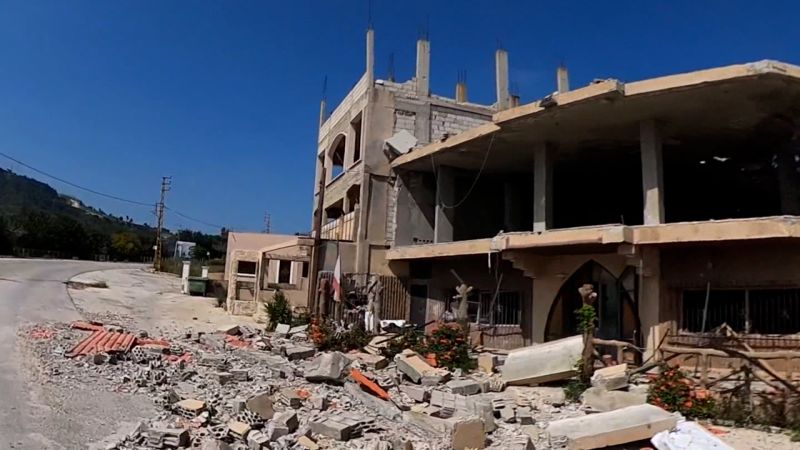In the quiet, lush landscapes along Lebanon’s border with Israel, one may find an eerie stillness. These areas are home to ghost towns, remnants of the past that tell a tale of conflict, survival, and the inexorable march of time. Amid the escalating tensions with Iran, these ghost towns stand as silent spectators and an ominous reminder of possible consequences.
Ghost towns, by their very definition, are deserted areas once bustling with life. Traces of such sites are spread across Lebanon’s border with Israel, adding a certain nostalgic gloom to the picturesque landscape. Their abandonment dates back to several years ago, most notably in the aftermath of the 2006 Lebanon War, and a result of ongoing unrest in the region. However, the danger that shrouds these towns has become doubly palpable with the recent boasts from Iran of military might.
As conflict brews in the Middle East, Iran has not held back its threats. The country’s supreme leader, Ayatollah Ali Khamenei, has reportedly gone on record to state that Iran will defend its allies, but it’s the subtext that has experts at edge – that Tehran may not sit idly by if Israel continues to undermine Hezbollah’s power in Lebanon.
Against this background sit these abandoned towns, their silent streets and empty houses creating an eerie absence of life that possibly paints a picture of what other border towns in Lebanon may face if the tensions convert to blatant hostilities.
The abandoned buildings carry battle scars from past conflicts in this volatile region. Evidence of bullet holes, partially collapsed ceilings, and burnt structures hark back to the 2006 Lebanon War, while the lingering risk of unexploded ordnances is enough to keep anyone at bay. From the Italianate Church in the village of al-Ghajar split between Lebanon and the Golan Heights to the fortified houses of Marjayoun, these bricked ghosts narrate their own story of violence and survival.
Yet, despite their desolate state, these towns hold a haunting beauty. Their quiet tranquility contradicts the cacophony of conflating international interests. Round-holed watchtowers peek over thick stone walls, hand-carved architectural details stand as a testament to beautifully crafted structures, and the wild vegetation have taken over the nooks and corners given up by humanity, exhibiting the tenacious interplay between man and nature.
However, beneath this stark beauty lies an unsettling reality. With Iran ramping up its military activities and threats towards Israel, the fear of another devastating conflict lingers in the air. These ghost towns may well signify the looming danger, an unwanted throwback to history repeating itself, and the potential fate of more towns in the region.
The presence of UN peacekeepers based in these areas also complicates the situation. Any flare-up between Hezbollah and Israel could potentially endanger the UN Security Council-mandated United Nations Interim Force in Lebanon (UNIFIL), stretching the international conflict to unprecedented scales.
As the geopolitical storm brews between Israel and Iran, the ghost towns along Lebanon’s border serve as a stark reminder of the death and destruction that such conflicts can bring. They stand as potent symbols of the acrid aftermath of war and the profound silence that it leaves in its wake. Their poignant stillness could be a powerful alarm to the parties involved, cautioning a hope for peace to be preserved – and just might quietly implore that history should not, and does not have to, repeat itself.




